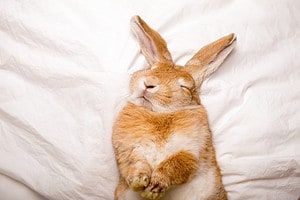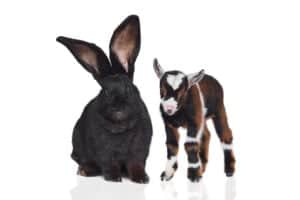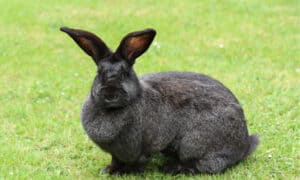Holland lops are popular pet rabbits available in a range of different colors, patterns, and shades. Some of them are rare and unique, whiles others are common.
Holland lops have floppy ears that frame the sides of their adorable faces. They have soft, plush fur that is easy to groom, but is unfortunately not hypoallergenic. Holland lops were first recognized in 1979 by the American Rabbit Breeders Association (ARBA) and have since gained popularity as companion animals.
Quick Info About the Holland Lop
| Origins: | First bred by Dutch breeder Adrian de Cock. |
| Type: | Breed of lop-eared rabbit. |
| Lifespan: | 7 – 10 years |
| Diet: | Herbivore |
| Adult size: | 5 – 10 inches and 2 – 4 pounds |
| Coat Type: | Dense, medium-length, rollback variety. |
| Coat Colors: | White, cream, frosty, brown, red, black, buckskin, blue, fawn, tan, chestnut, chocolate, lilac, chinchilla, silver, lynx, opal, and orange. |
| Coat Variations/Patterns/Markings: | Solid, sable, broken, wide bands, tort, self, shaded, agouti, pointed, tick, Siamese, harlequins, and tan pattern. |
| Eye Colors: | Blue, gray, brown, ruby, and black. |
Holland Lop Color Groups
The various Holland lop colors and patterns are divided into different groups:
- Agouti: Chestnut, chocolate, opal, chinchilla, lynx, chinchilla, and squirrel.
- Broken: Bi or tri-colored coat colors with one color usually being white.
- Wide Band: Frosty, cream, orange, and red.
- Self: Black, blue, lilac, blue-eyed white (BEW), red-eyed white (REW), and chocolate.
- Shaded: Sable point, seal, smoke pearl, blue point, tortoise (tort), and Siamese sable.
- Pointed White (Himalayan or Californian): White bodies with darker colors on either their feet, tails, ears, or nose. The colors on those extremities are black, chocolate, lilac, and blue.
- Tan Pattern: Black otter, chocolate otter, lilac otter, blue otter.
- Ticked: Darker base coat colors are black, lilac, blue, and chocolate. Lighter base coat colors are silver, golden, and steel.
The Rarest Holland Lop Colors
The following Holland lop coat colors and patterns are rare and unique. Keep in mind that while all of these Holland lop varieties exist, not all of them are showable or breed standard. Most of the colors and patterns are the result of genetic mutations.
1. Blue-Eyed White (BEW)
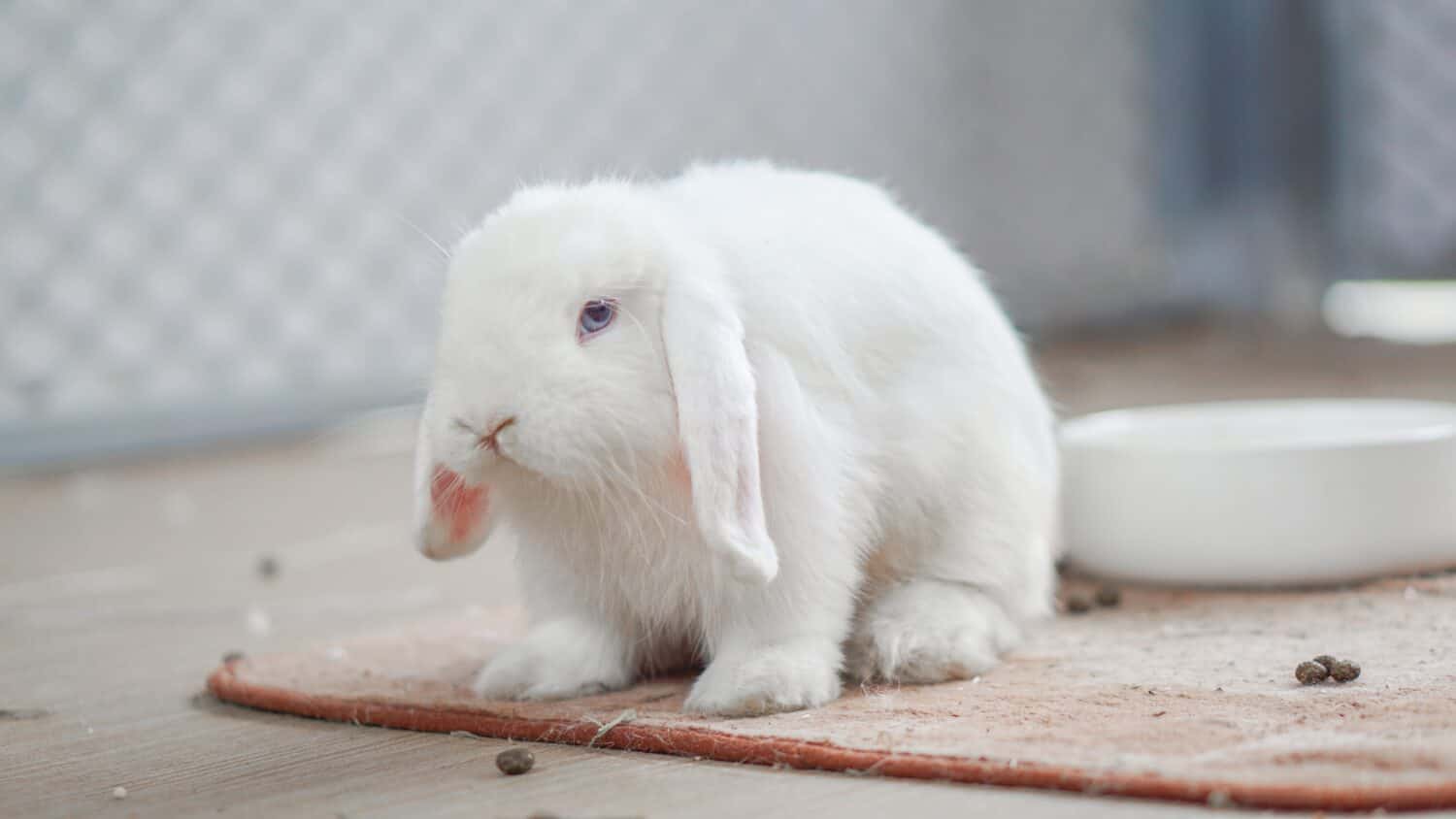
Holland lops can have blue eyes because of a certain gene.
©Choco’Love/Shutterstock.com
The blue-eyed white Holland lop is a rare sight to see. These Holland lops have a pure white coloration with bright blue eyes that complement their fur well. The Vienna gene is responsible for their striking blue eyes.
2. Ruby-Eyed White (REW)
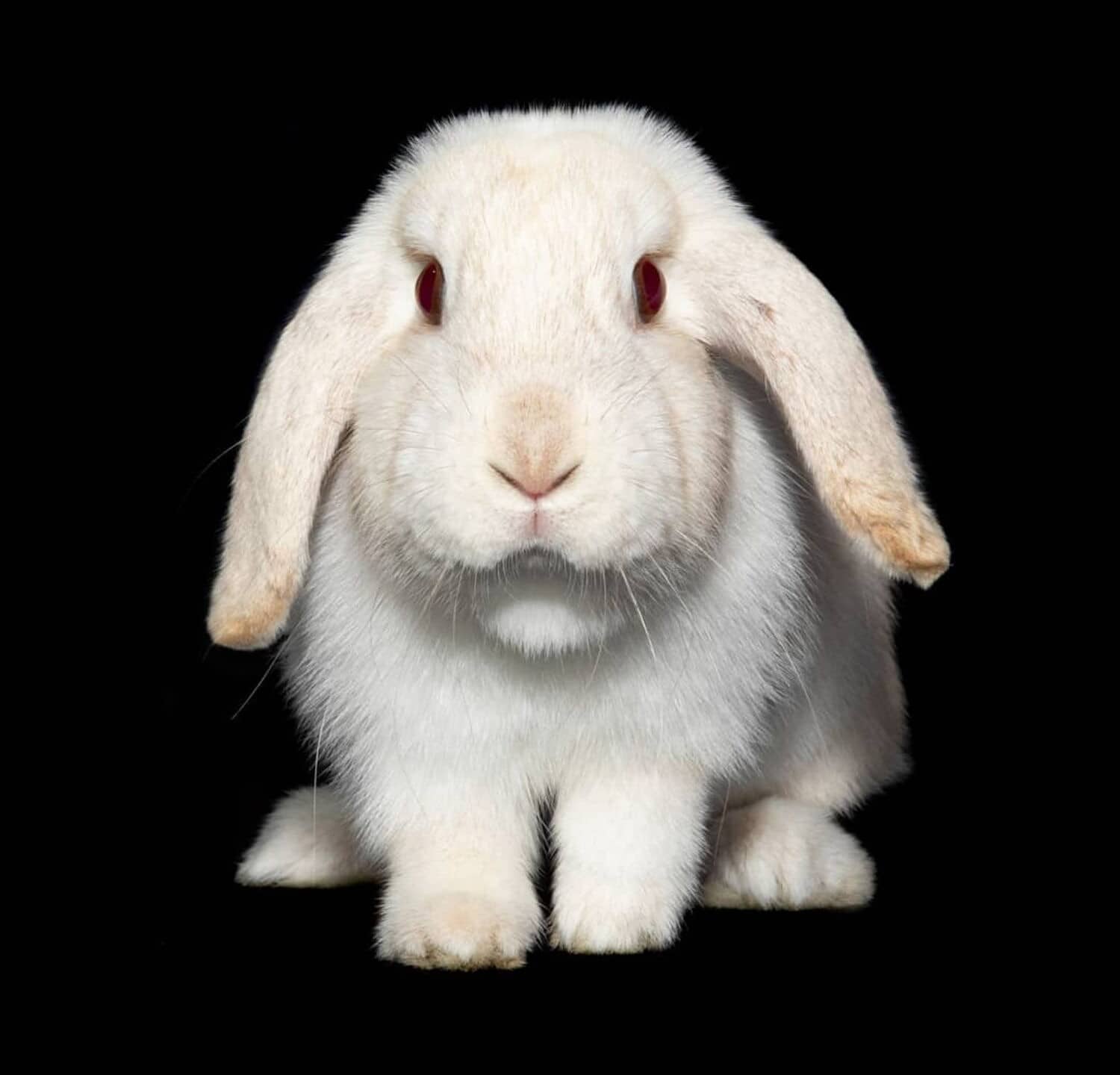
The ruby eyes of a REW Holland lop look striking in comparison to their snow-white coat.
©Mamo studios/Shutterstock.com
Similar to the BEW Holland lop, ruby-eyed white Holland lops have a pure white coat with no markings. However, instead of blue eyes, they have ruby or red colored eyes. Many mistake them for albino rabbits since the two Vienna genes mask the rest of their genotype.
3. Blue Seal
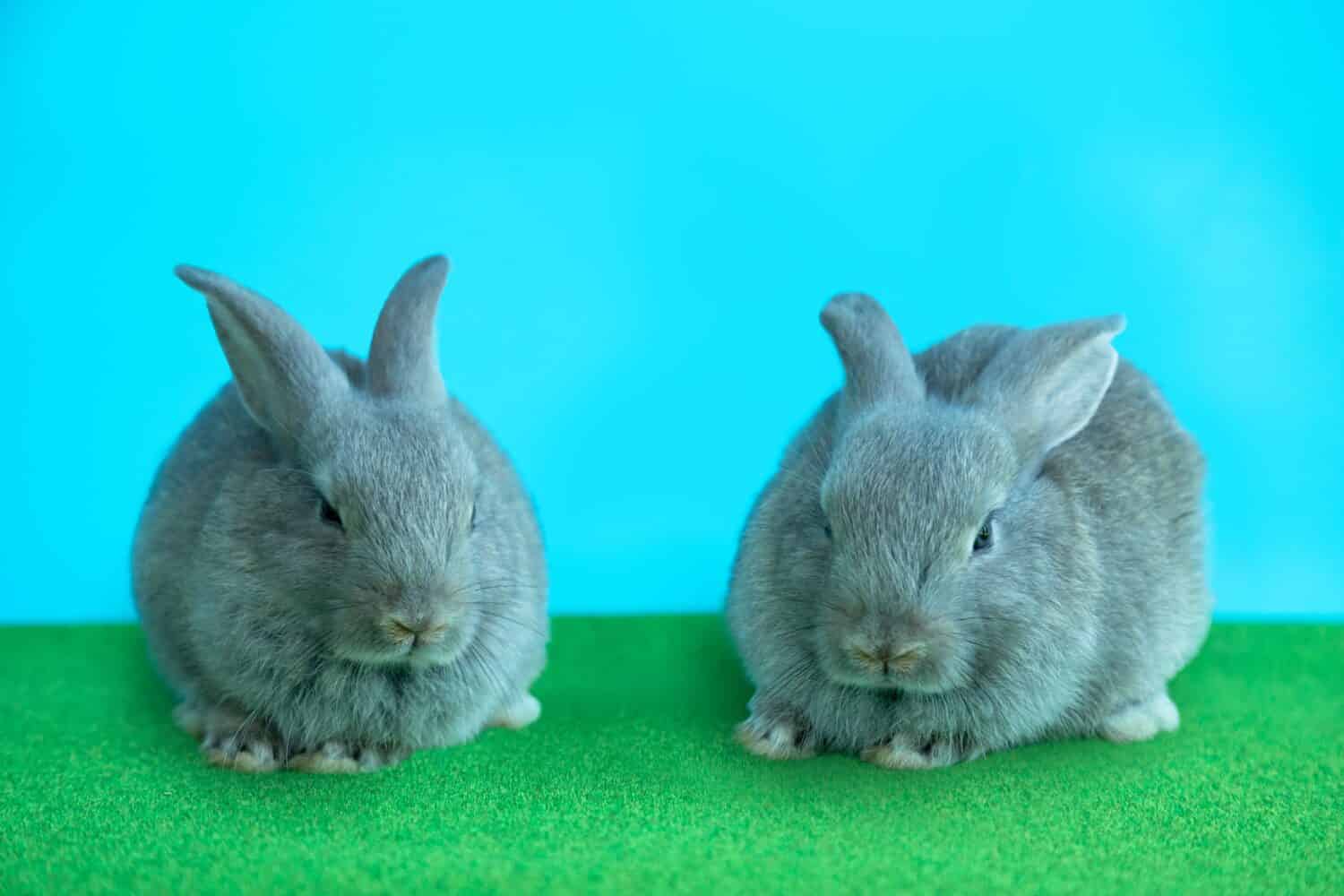
Holland lops can be found in various colors, with blue being quite popular.
©MENG KONGSAK/Shutterstock.com
Blue seal Holland lops have an entirely blueish silver coat with lighter patches along the stomach and sides of their bodies. Their coat is incredibly shiny, which makes them both unique and appealing pet rabbits.
4. Siamese Sable
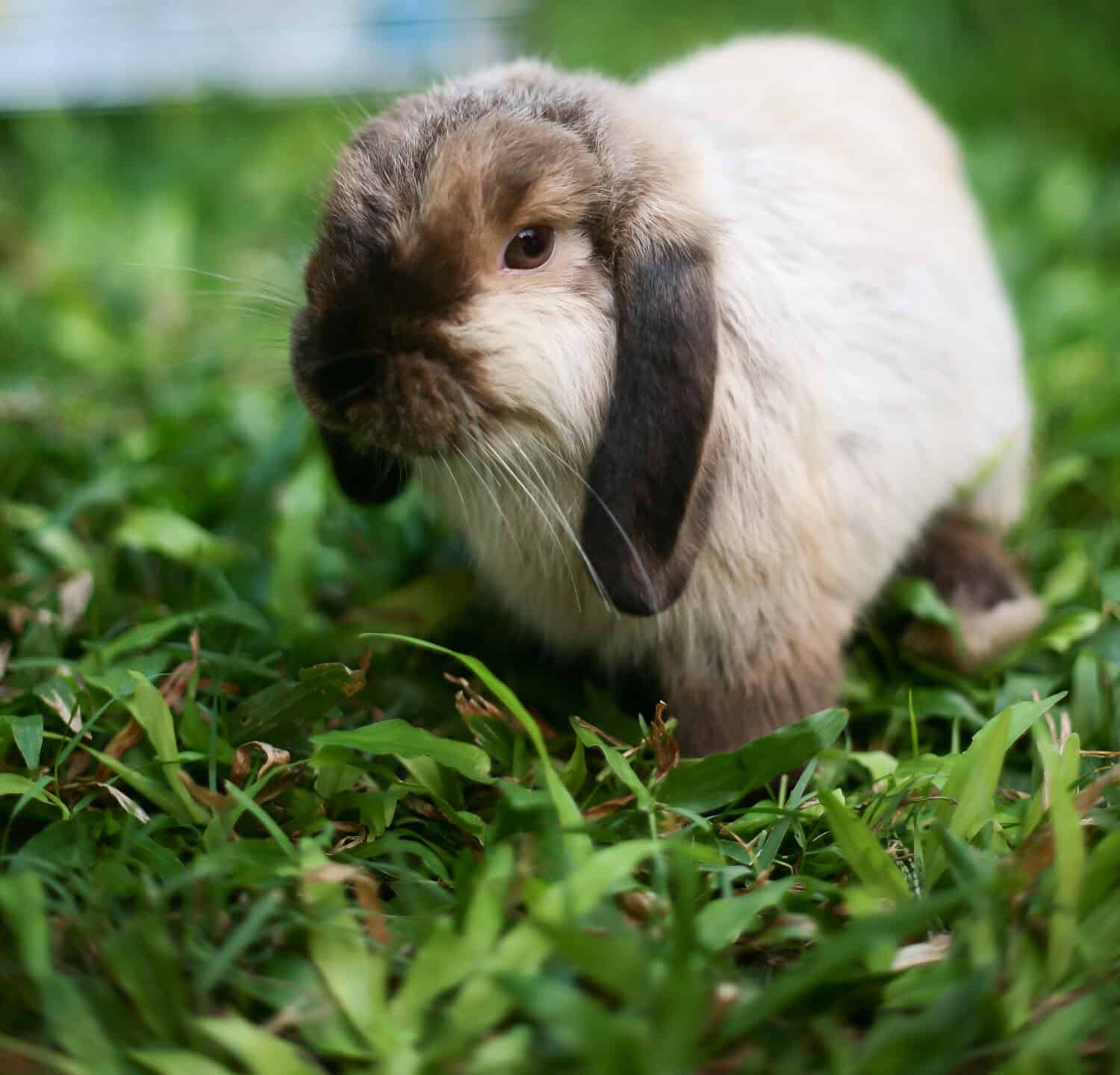
Some of the rarest Holland lop varieties are from the white point group.
©StudioByTheSea/Shutterstock.com
Siamese sable Holland lops have a white and brown colored body, with darker extremities. Their ears, face mask, feet, and tail are deep brown point color. Their eyes can either be ruby or brown, and their coat is incredibly glossy.
5. Blue Point
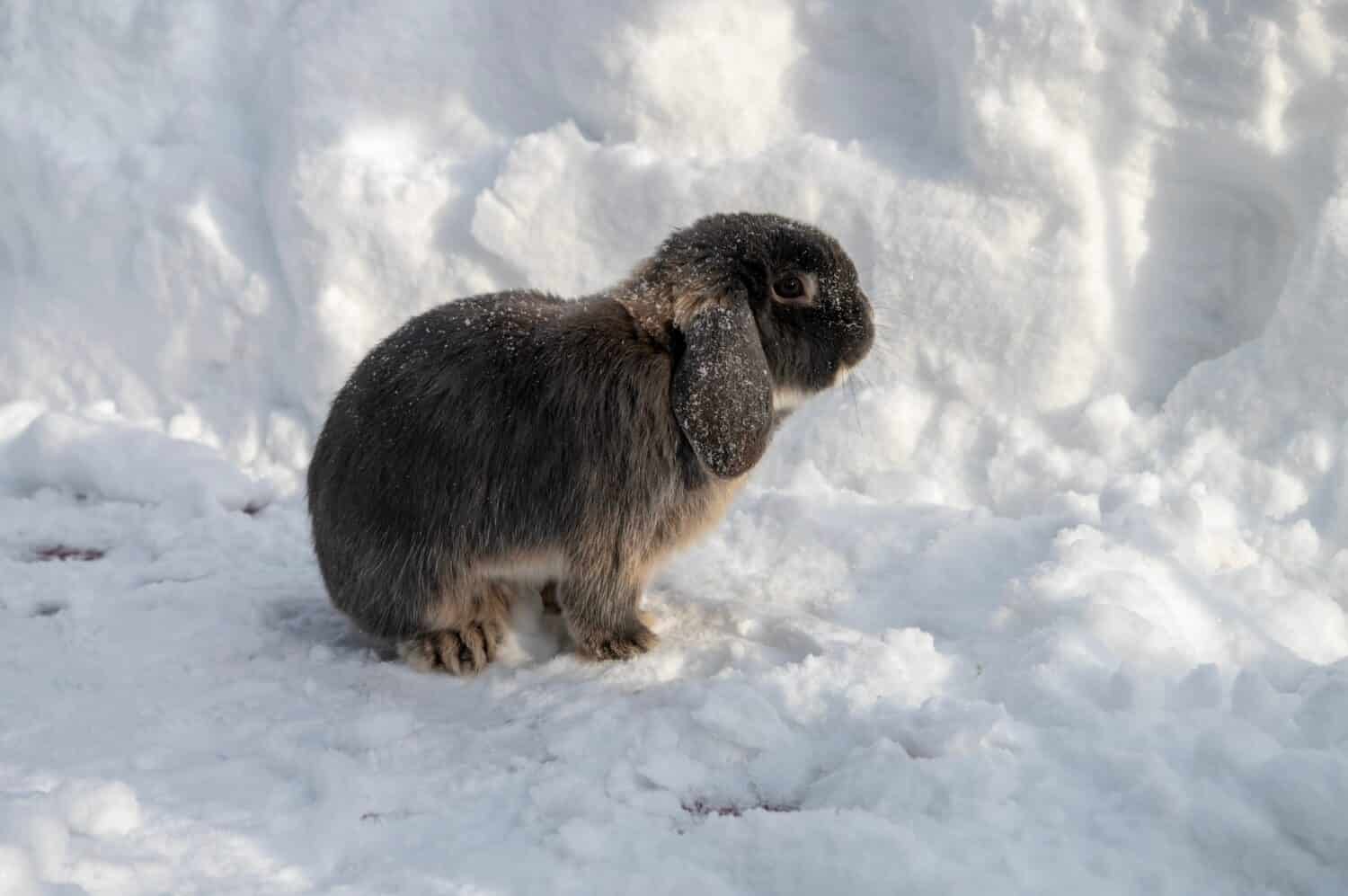
All Holland lops have a soft and dense medium-length coat.
©Nattapong Assalee/Shutterstock.com
The blue point is a shaded Holland lop color. Their coat is an off-white or creamy color with slight blue-grey points. Their face mask, ears, feet, and tail are often the darkest points of their bodies.
6. Squirrel (Blue Chinchilla)
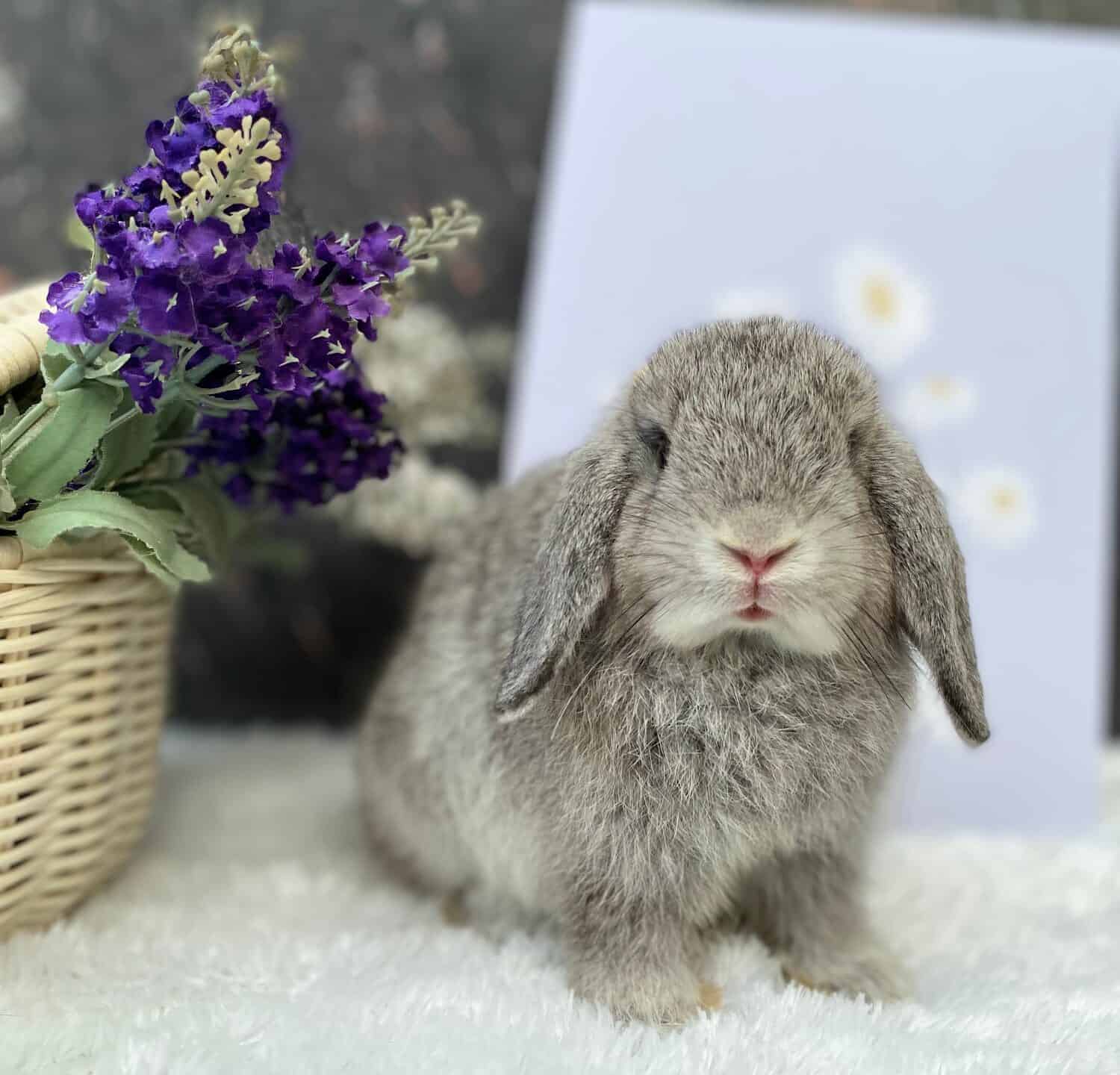
Squirrel is another way to describe the blue chinchilla Holland lop.
©bydaintiest/Shutterstock.com
The squirrel or blue chinchilla Holland lop is a stunning rare variety. Their coat has agouti markings and an overall blueish-grey coloration. Their undercoat is dark and shiny, with white shades visible on the chest, neck, and sides of their bodies.
7. Black Silver Marten
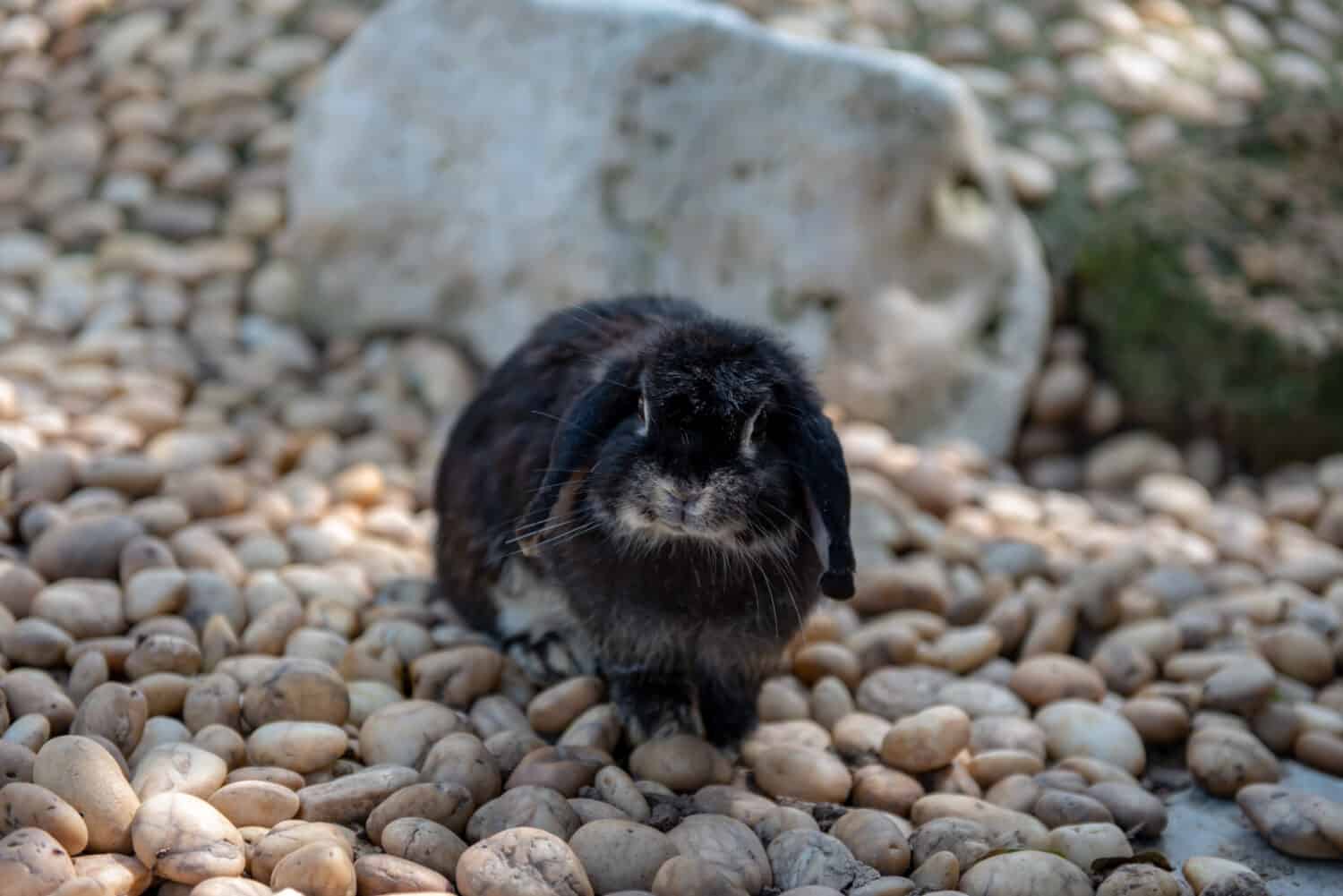
Black silver marten Holland lops are sometimes confused with the black otter variation.
©MR. AEKALAK CHIAMCHAROEN/Shutterstock.com
The black silver marten Holland lop has a unique appearance that makes them look similar to black otter Holland lops. However, they lack the typical orange coloration and have a light-colored belly. These rabbits have a self-black coat along with white-tan pattern markings and white ticking on their chest, face, and sides.
8. Blue Fawn Harlequin
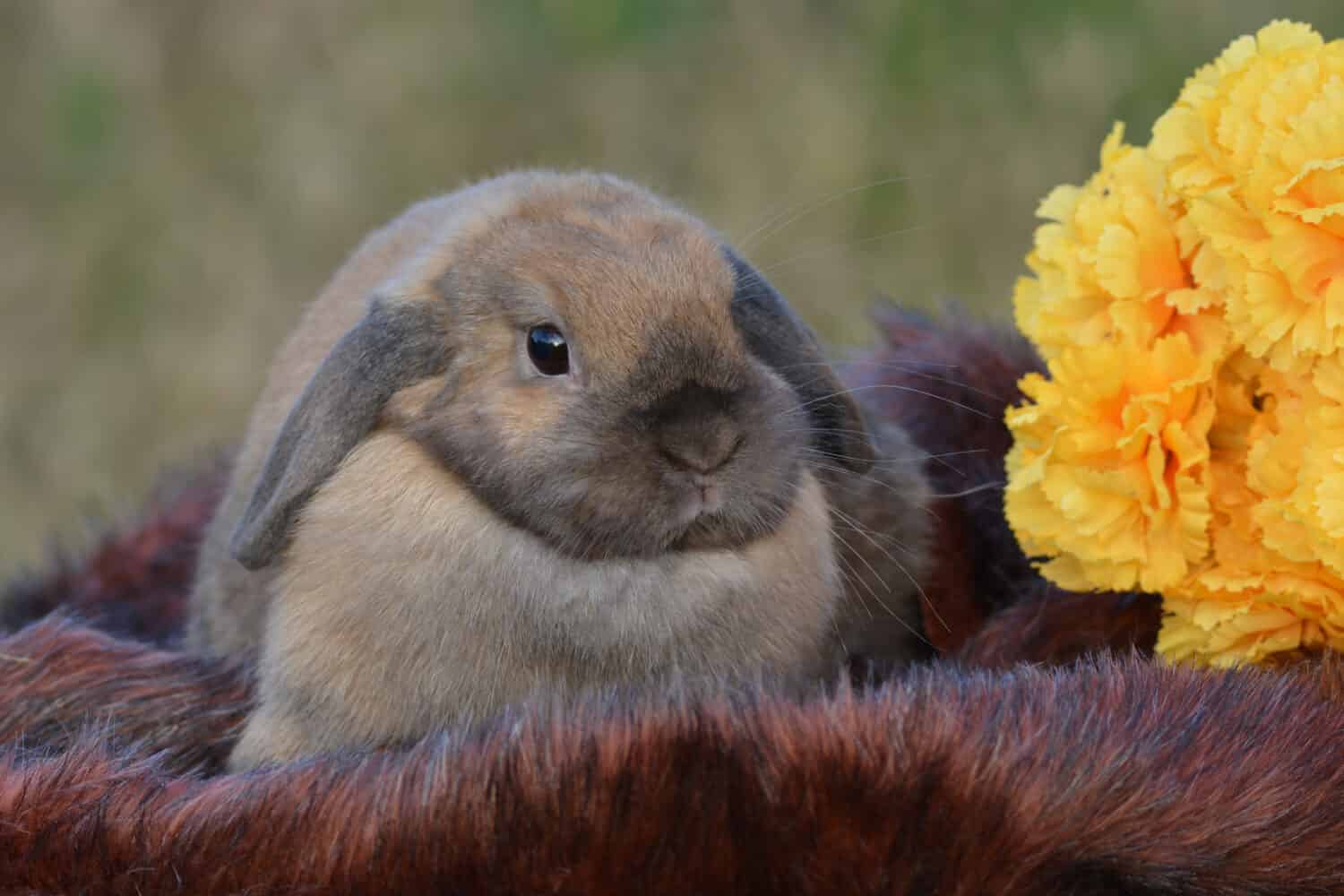
Holland lops have an average lifespan of 7 to 10 years.
©C. Hamilton/Shutterstock.com
Blue fawn harlequin Holland lops have a blue and fawn tricolored body with various shades. Their body is covered in blue bands and tan or fawn stripes. This is a rare variety of Holland lop that is particularly striking in comparison to the other varieties.
9. Blue Otter
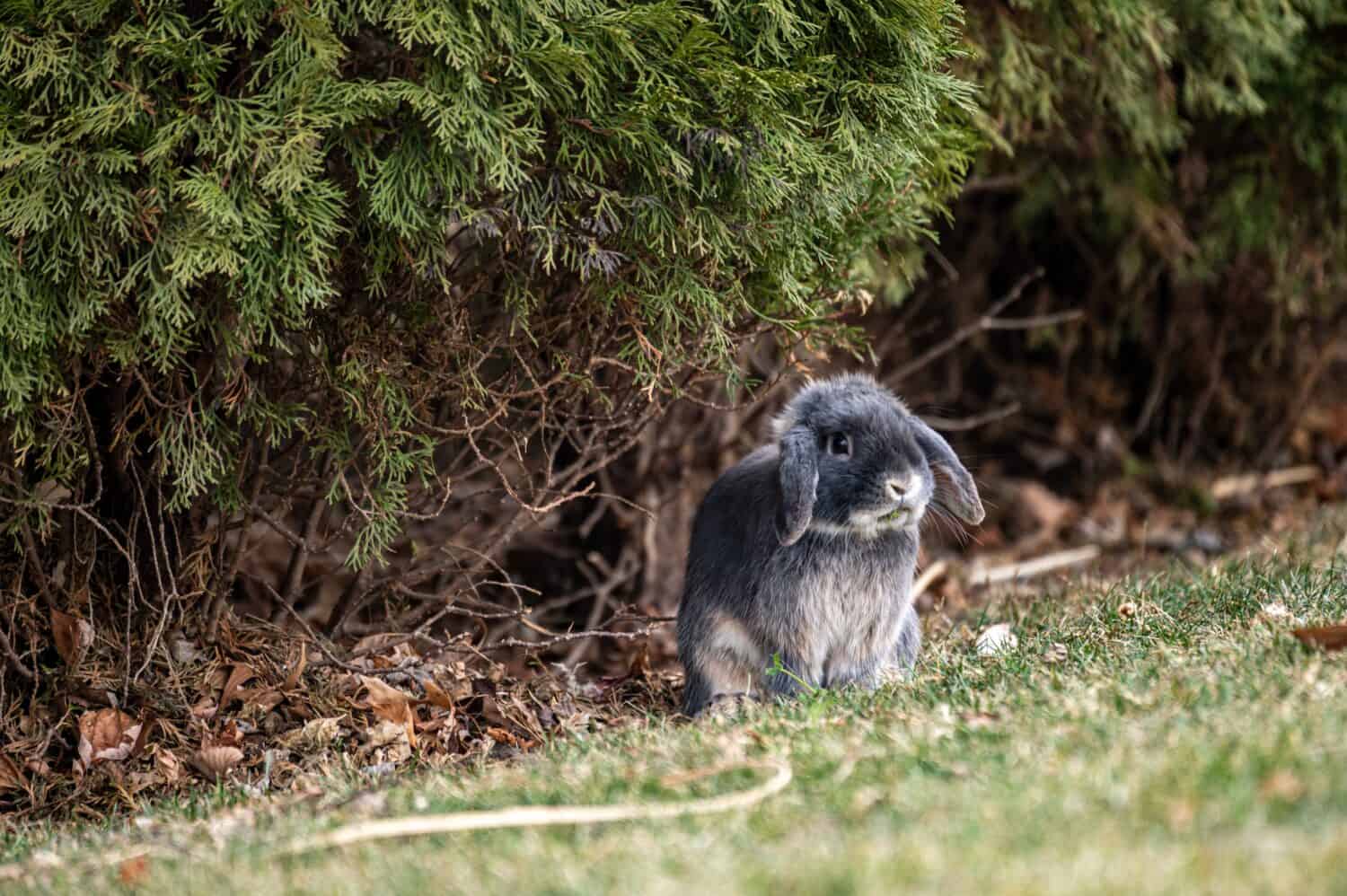
The fur around a blue otter Holland lops nose is much lighter than the rest of their body.
©Nattapong Assalee/Shutterstock.com
The blue otter Holland lop has glossy fur that is a deep blue coloration. They have tan-colored markings with fawn ticking along their neck and white-tan markings. The fur around their nose is a much lighter color than the rest of their body, making it a distinguishable feature of this rabbit.
10. Silver Tipped Steel
The silver-tipped steel variety is perhaps one of the rarest Holland lop colors available. They have a distinctive black ticked coat with silver tips. Their eyes are usually brown, and they typically have darker shading at the ends of their ear flaps, and light-colored paws.
11. Lynx
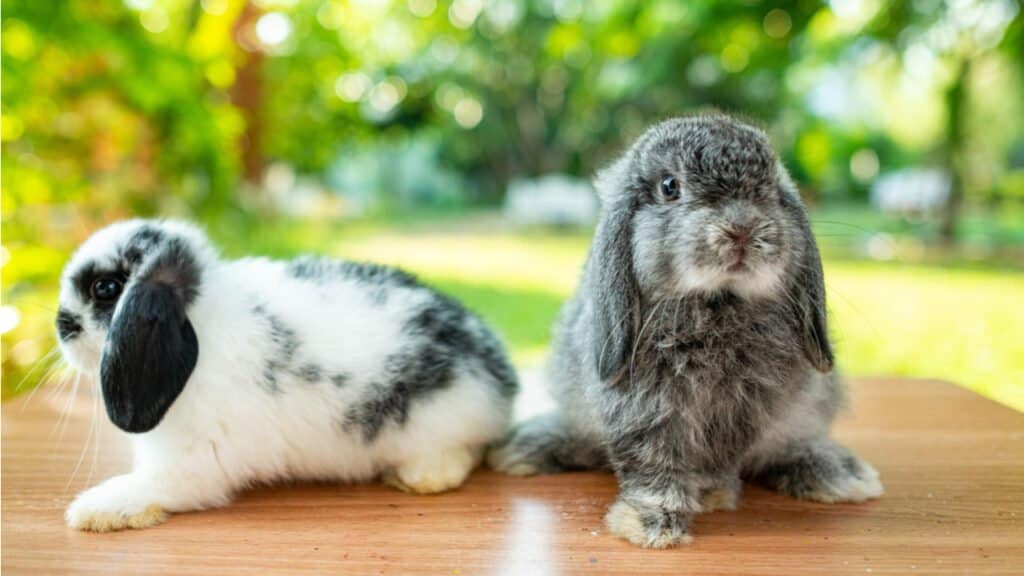
Black or brown is the most common eye color that can be seen in Holland lops.
©suriyachan/Shutterstock.com
Lynx is a rare agouti coloration available in Holland lops. Their coat consists of lilac and fawn coloration, with lilac bands at the top of their body followed by fawn or off-white banding. The lynx Holland lop’s chest is usually the lightest part of their body.
12. Chocolate Pointed White

Chocolate-colored Holland lops have a deep brown coloration.
©mullyadii/Shutterstock.com
Chocolate-pointed white Holland lops have striking white fur mixed with chocolate point markings. Their face mask, ears, feet, and tails are a deep chocolate color.
Most Common Holland Lop Colors
Let’s move on to the most common Holland lop colors. These colors can either be a self-coloration, form a base coat color, or be mixed with other Holland lop colors.
1. White
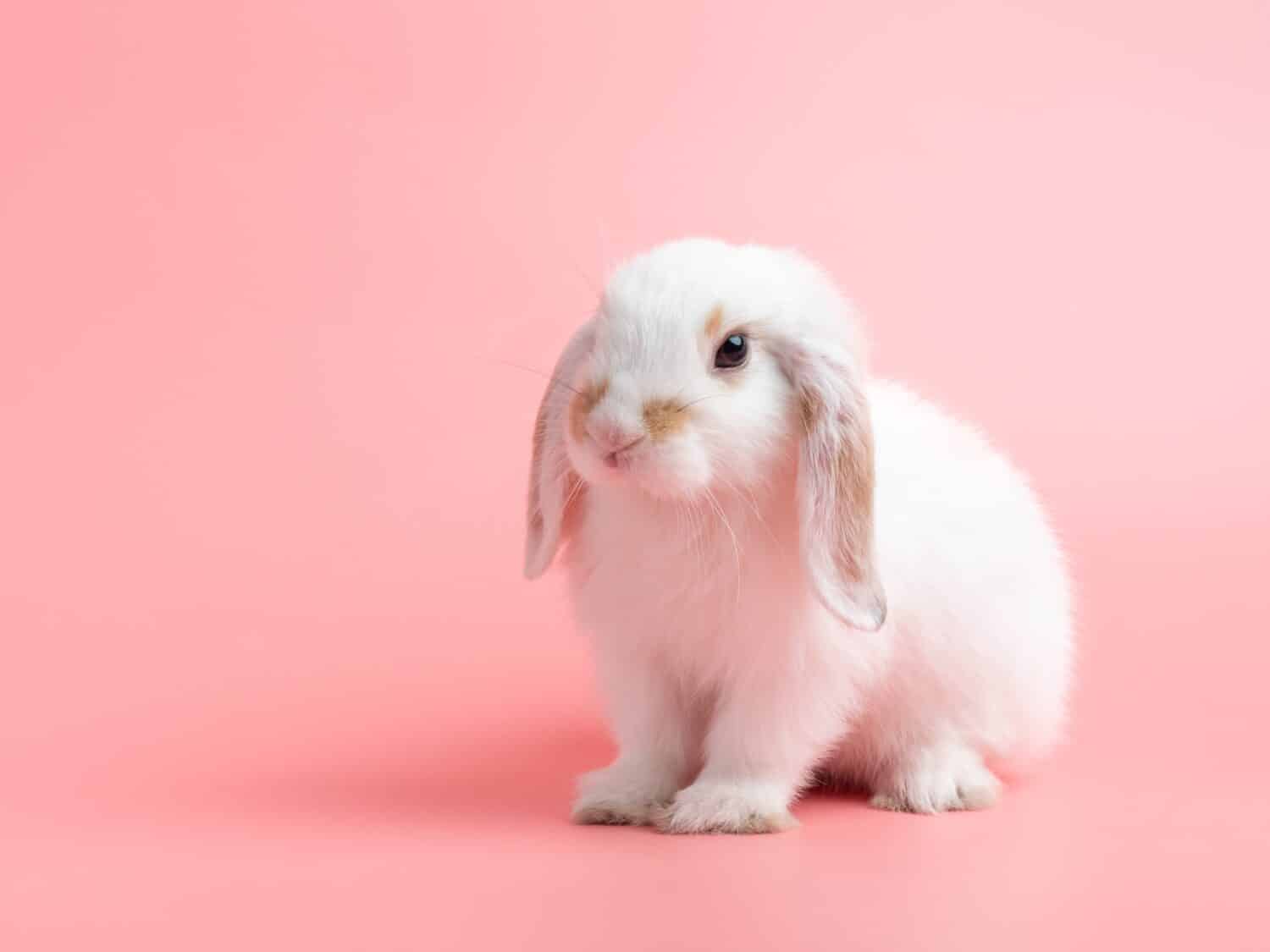
Most Holland lops have a white coat that is combined with other colors.
©Arlee.P/Shutterstock.com
White is a common coloration in Holland lops. You can either find Holland lops with white markings throughout their body or as a primary coloration.
2. Cream
Cream Holland lops are off-white and almost very light tan. This color is a diluted version of the orange coloration and forms part of a popular wideband color.
3. Black
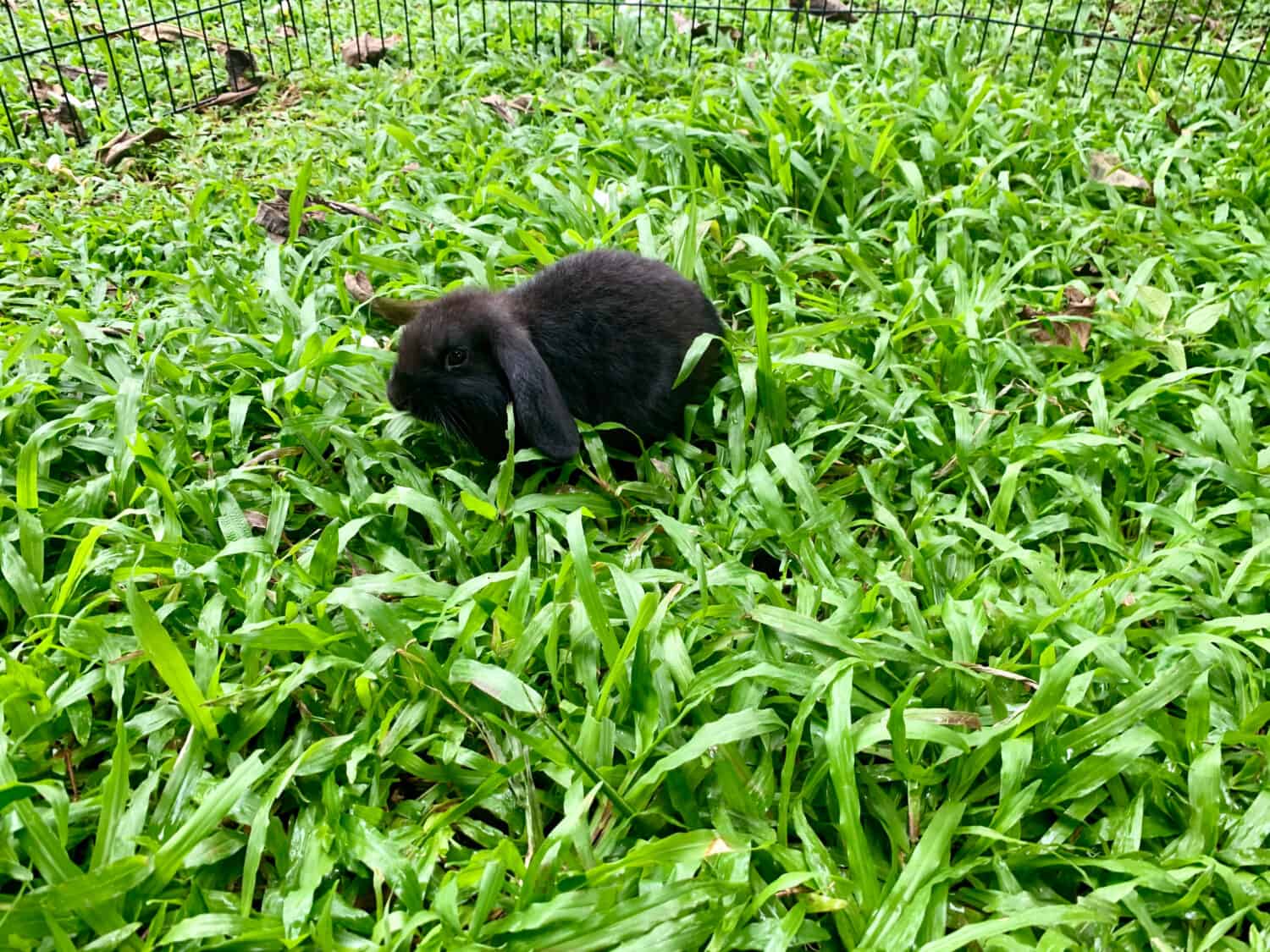
A black Holland lops fur may take on a brown tint in the sunlight.
©Kepeating In The Attic/Shutterstock.com
Black is a fairly popular self-color. This black coloration can either be solid or include other fur markings. In some cases, a black Holland lops coat can appear dark brown in sunlight.
4. Blue
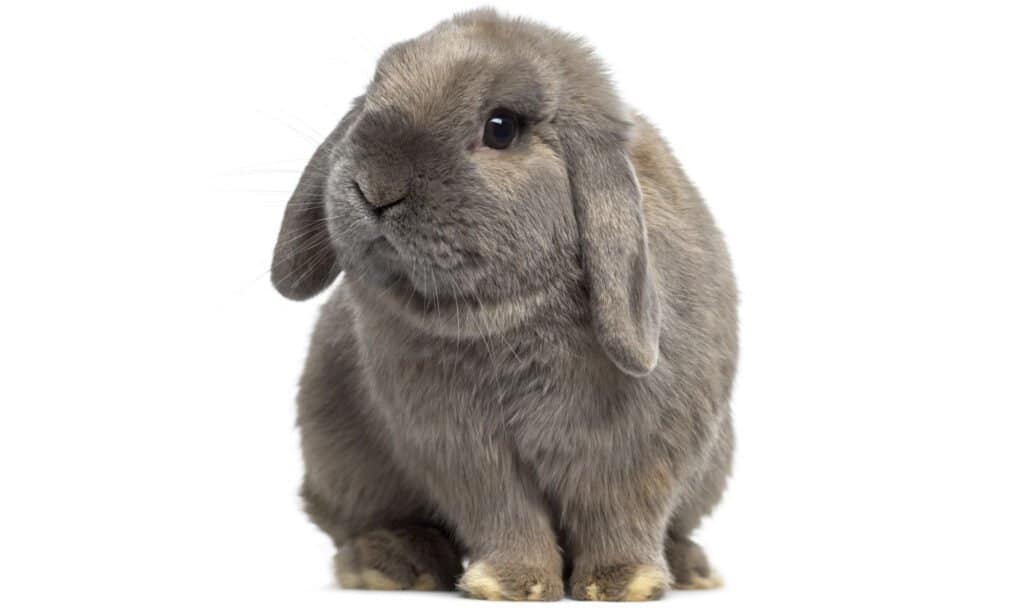
Blue is a common Holland lop color.
©Eric Isselee/Shutterstock.com
Another popular Holland lop color is blue. As usual, the blue can be a base color, mixed with other colors, or form part of different markings.
5. Chestnut
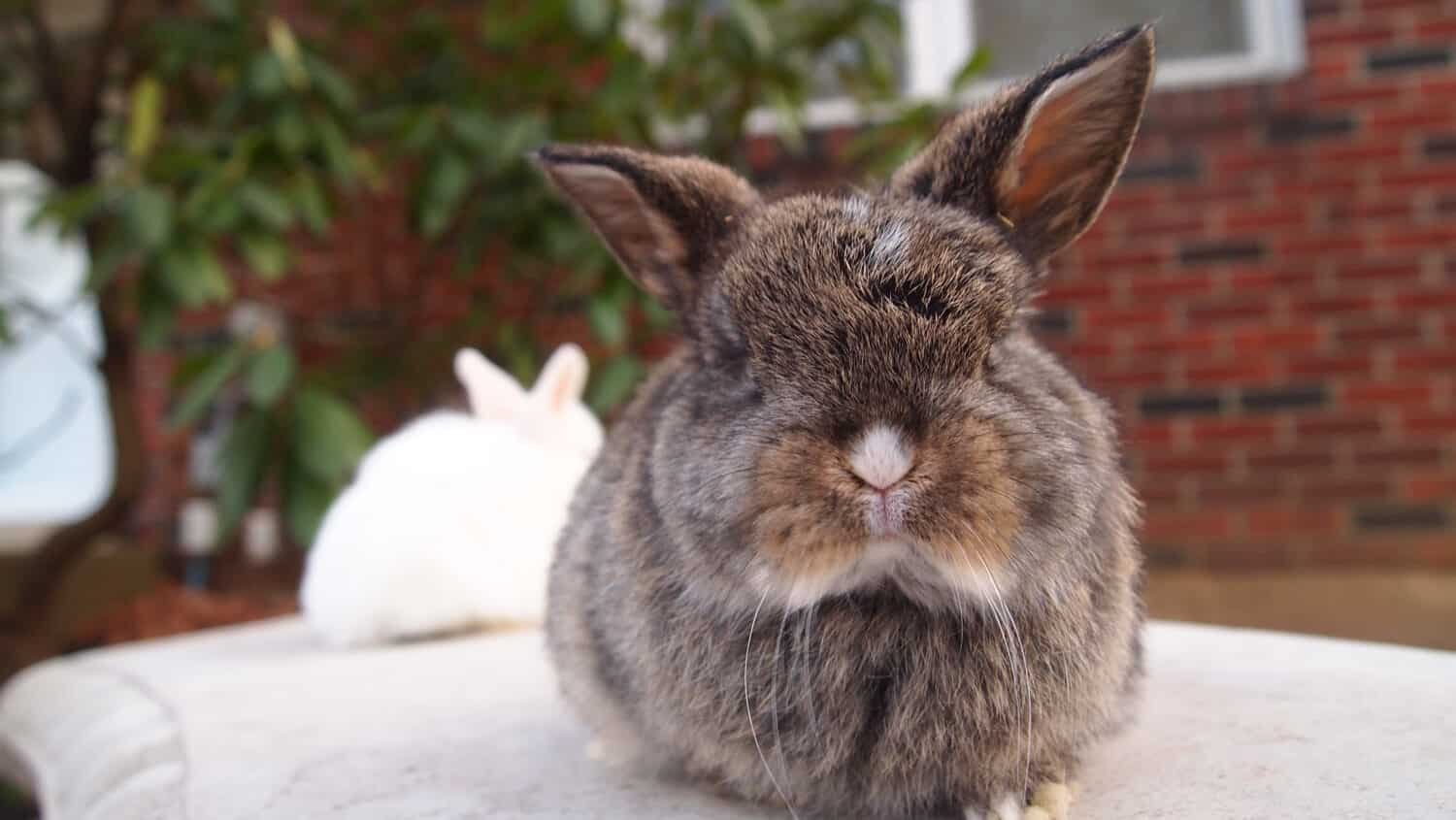
Many wild rabbits have the chestnut agouti coloration.
©Katie E Boyd/Shutterstock.com
Chestnut is a common wild rabbit coloration. They are the most common agouti colors in Holland lops and the color ranges from light to dark brown. The rich brown coloration seen in chestnut Holland lops often lightens as they age.
6. Orange Wideband
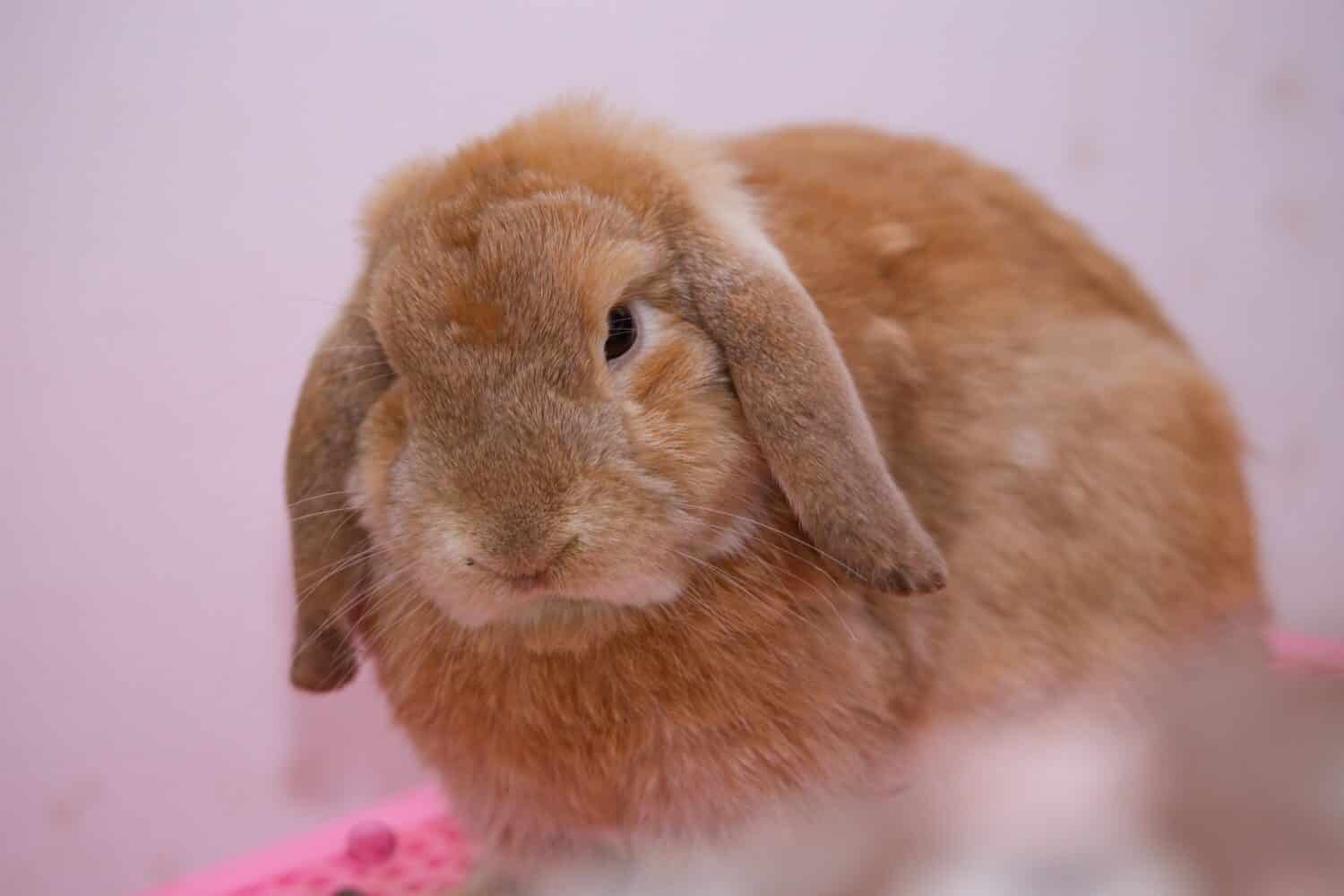
Orange-colored Holland lops have stunning rusty fur.
©PIMPIKA_070432/Shutterstock.com
Orange is a common wideband coloration in Holland lops. Their coat is a reddish-orange coloration with agouti markings. Their undercoat is usually grey or white undercoat which can make their orange hairs look dark.
7. Frosty
Frosty Holland lops, or frosted pearls, have the lightest coat variety in the wideband group. They have a white undercoat that darkens to a grey tip on their extremities.
8. Chocolate
The deep brown coloration that looks like milk chocolate is a common coloration.
9. Black Tort
The black tort is one of the most common Holland lop colors. This also happens to be one of the most popular show varieties of Holland lop. These rabbits can appear shaded, but they do not carry the shaded gene. Black tort Holland lops have a rusty brown coloration mixed with a blue undercoat that is mostly visible where their fur is the shortest. Their face mask, ears, feet, and tail are usually a dark brown color.
10. Lilac
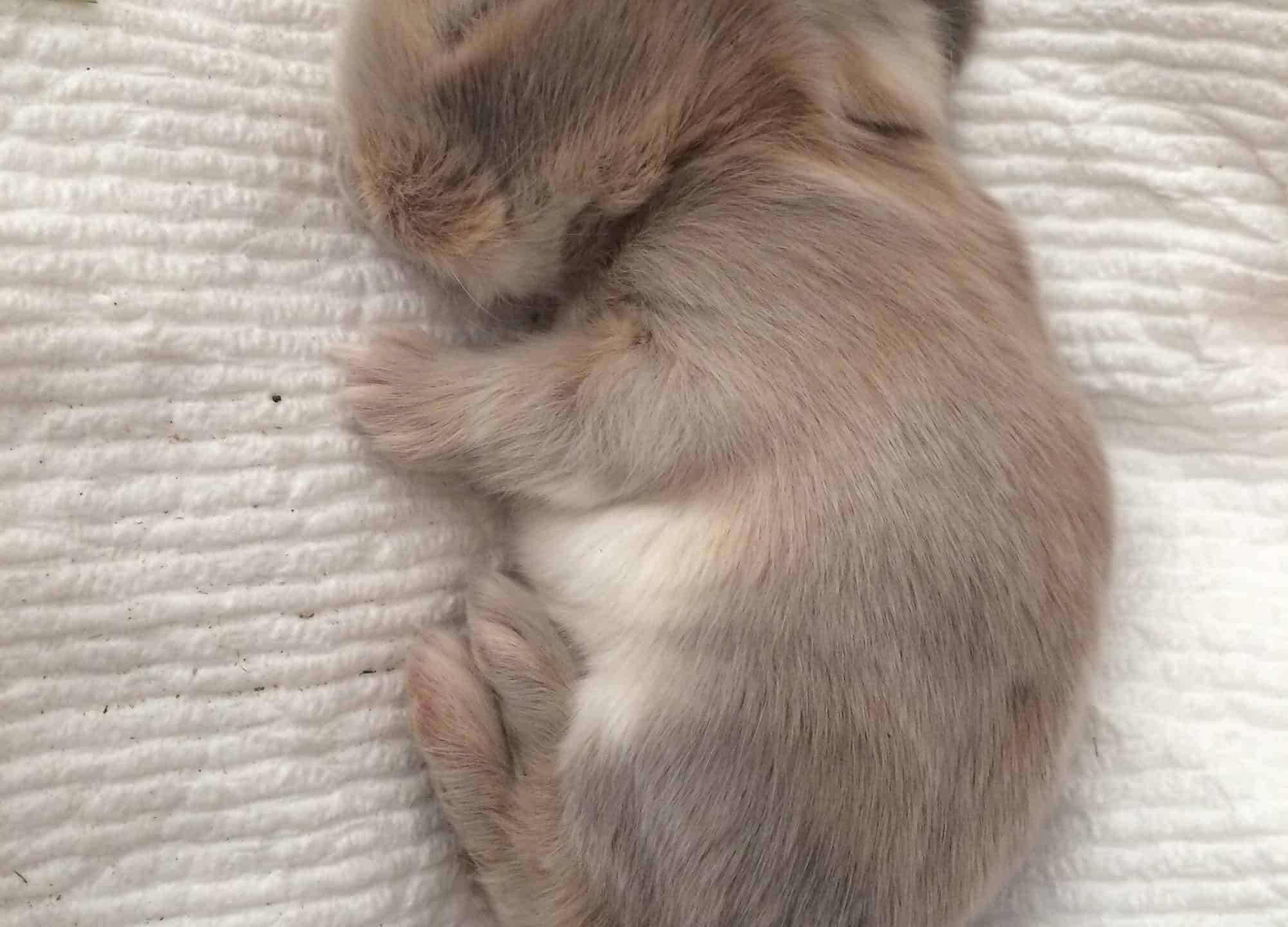
Young lilac Holland lops have a bluish-grey coat.
©Ellethwen Rue/Shutterstock.com
Lilac Holland lops have a dove grey coat with a slight pink undertone as an adult. Their coat color usually starts out as a bluish-grey color that darkens with age.
11. Fawn
Holland lops are available in a pale orange coloration known as fawn. Fawn Holland lops often have a mixture of other colors as well, such as white and grey.
12. Opal
The opal Holland lop has agouti markings and a blue and fawn-colored surface. They have a fawn and slate-blue undercoat color and a blue band above the intermediary band, and their tails are ticked with fawn.
13. Blue Tort
The blue tortoise or blue tort for short is a cream and tan colored Holland lop. Their light-colored fur has speckles of a greyish-blue coloration.
14. Smoke Pearl
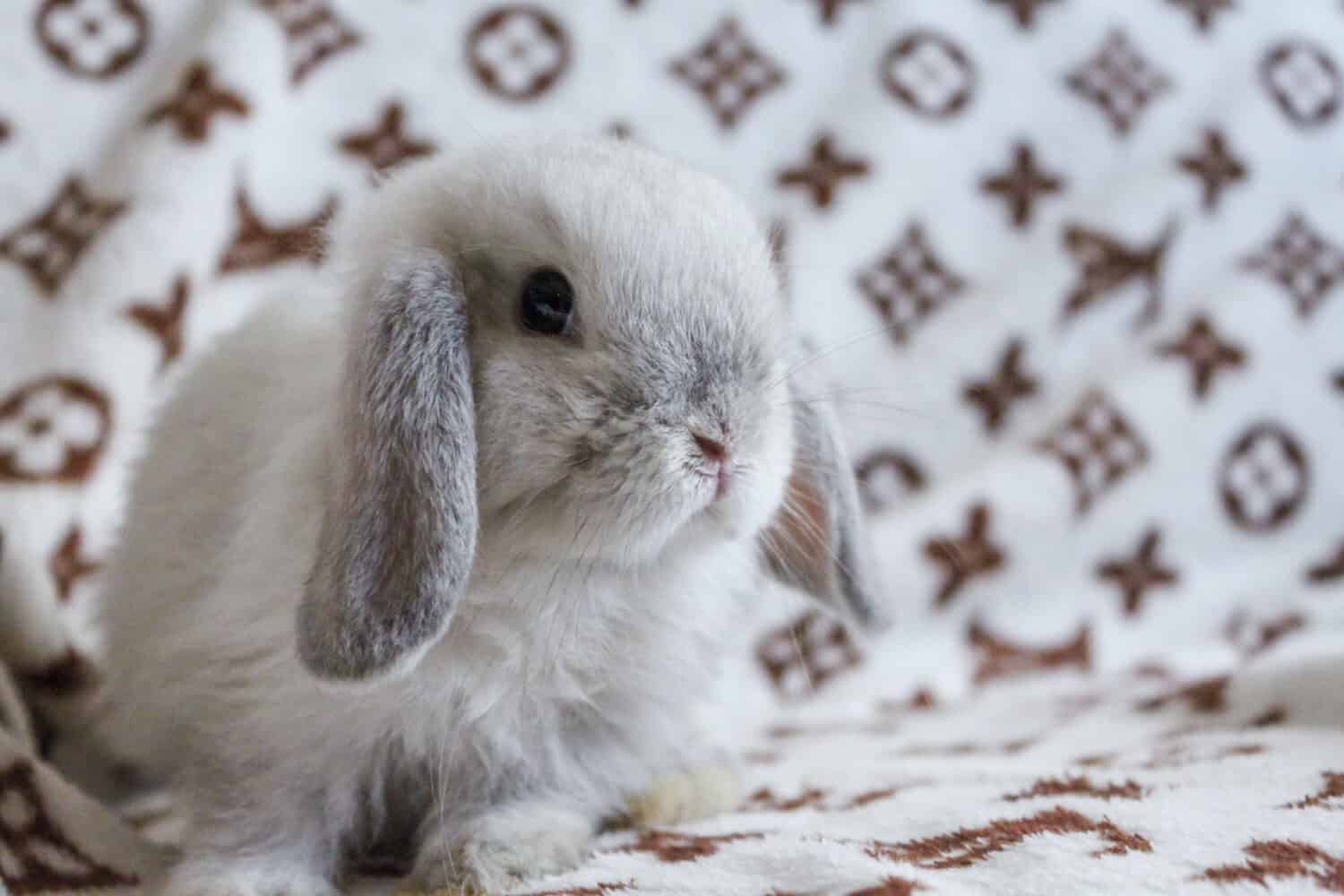
Smoke pearl Holland lops have dark smokey ears, muzzle, feet, and tail.
©tesafiona/Shutterstock.com
The smoke pearl is a stunning variety of Holland lop. These rabbits have a smoky grey coloration, usually with darker blue feet, ears, and facial masks. Their coat has a lovely glossy and sleek appearance while being fairly easy to maintain.
In Conclusion
The silver steel-tipped Holland lop is considered one of the rarest and most unique varieties, whereas the chestnut agouti and black tort Holland lop are considered the most common varieties. Most of the rarest Holland lop varieties can be found in the white point group.
The photo featured at the top of this post is © suriyachan/Shutterstock.com
Thank you for reading! Have some feedback for us? Contact the AZ Animals editorial team.




